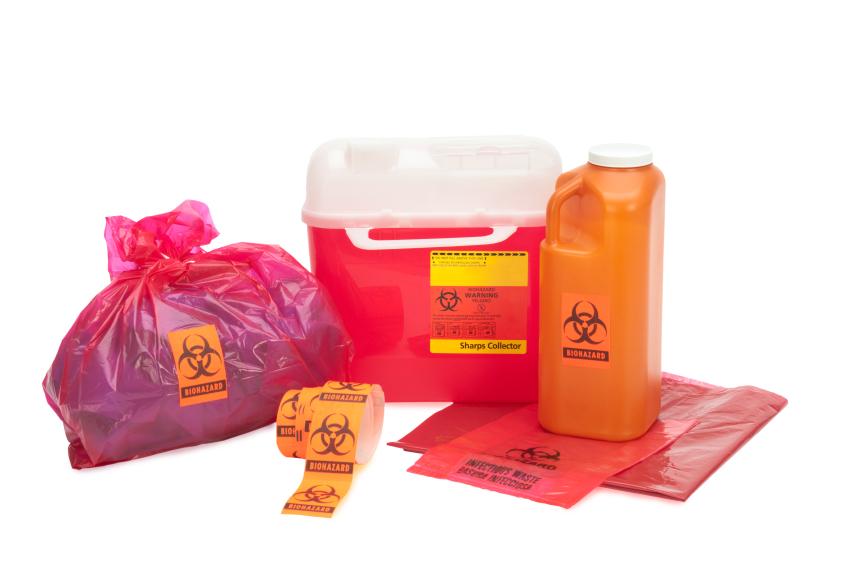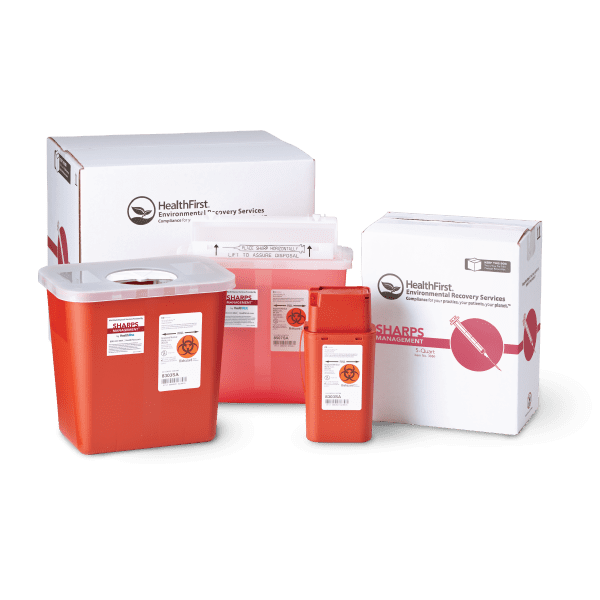Comprehending the Various Types of Waste Disposal Strategies
In the realm of waste administration, the variety of disposal methods available today is vast and differed, each method offering a distinct function in dealing with the obstacle of garbage disposal. click here. From recycling approaches that intend to give new life to products, to the complex procedures of contaminated materials administration, the landscape of garbage disposal is complex yet important for ecological sustainability. Recognizing the nuances of these different techniques not only clarifies the relevance of responsible waste management however likewise triggers us to reconsider our technique in the direction of garbage disposal in a swiftly advancing globe

Recycling Methods
Reusing approaches are critical for lasting waste management techniques in both property and industrial settings. medical waste disposal. By carrying out efficient recycling approaches, a substantial amount of waste can be drawn away from garbage dumps, conserving all-natural resources and lowering the ecological effect of manufacturing processes
In houses, curbside recycling programs play a vital function in encouraging households to separate recyclable products from general waste. Products such as paper, plastics, glass, and steels can be sorted and accumulated for handling into brand-new items, decreasing the demand for resources and energy-intensive production processes.
Industrial centers likewise count on recycling techniques to minimize waste generation and promote a round economy. By implementing closed-loop systems, services can recycle materials within their production procedures, lowering costs and environmental impact. medical waste removal service. In addition, commercial recycling programs frequently include collaborations with specialized reusing facilities to ensure that materials are appropriately arranged, refined, and reintegrated into the supply chain
Composting Techniques

Aerated static heap composting involves mixing natural waste materials in a huge stack and on a regular basis turning it to ensure appropriate aeration. This approach is effective for large composting procedures. On the other hand, vermicomposting uses earthworms to break down raw material right into nutrient-rich castings. This method is well-suited for smaller-scale procedures and households.
In-vessel composting entails placing organic waste in a closed container with controlled problems for temperature level and oygenation. Windrow composting consists of forming long rows of organic waste and on a regular basis transforming them to advertise disintegration - medical waste removal.
Land Fill Disposal
Landfill disposal is a commonly utilized approach for taking care of waste that can not be reused or composted. Methane gas, a result of disintegrating organic waste in garbage dumps, is frequently collected and made use of as a resource of sustainable power. Efforts to minimize reliance on landfills consist of advertising waste reduction, recycling, and discovering alternative waste disposal methods to decrease the ecological footprint linked with typical garbage dump find this disposal practices.

Waste-to-Energy Incineration
Incineration of waste for energy generation is a technique significantly being considered as a choice to traditional garbage dump disposal strategies. Waste-to-energy incineration involves the combustion of waste materials at heats, generally in specialized centers made to generate electrical energy or warmth through the procedure - click here. This strategy not just minimizes the volume of waste that would or else be destined for garbage dumps yet also uses the heat created throughout incineration to develop energy
Among the essential benefits of waste-to-energy incineration is its capacity to generate electrical energy while decreasing the environmental effect compared to standard garbage dump disposal approaches. By transforming waste into energy, this method assists in lowering greenhouse gas exhausts and dependence on nonrenewable fuel sources for power generation. Additionally, waste-to-energy facilities are geared up with sophisticated air contamination control modern technologies to minimize possible ecological pollutants released during the combustion process.
Hazardous Waste Management

Thinking about the important value of accountable waste monitoring techniques, specifically in the world of ecological sustainability, the focus now changes in the direction of the complex domain of Contaminated materials Management. Contaminated materials postures substantial risks to both human health and wellness and the environment, requiring specialized handling and disposal strategies. Typical examples of contaminated materials consist of chemicals, batteries, pesticides, and electronic waste.
Unsafe Waste Administration entails the recognition, collection, transportation, therapy, and disposal of materials deemed harmful or possibly harmful. This procedure needs adherence to strict laws and guidelines to minimize negative influence on ecological communities and public health and wellness. Different methods are used in managing unsafe waste, including recycling, safe and secure garbage dumps, encapsulation, and chemical therapy.
Proper Contaminated Materials Management is important for stopping contamination of soil, water resources, and air pollution. It is crucial for industries, research laboratories, healthcare facilities, and other generators of hazardous waste to implement durable management techniques, training programs, and emergency situation response prepares to make certain the safe handling and disposal of these materials. Failing to take care of contaminated materials suitably can have far-ranging consequences, highlighting the relevance of responsible and thorough techniques in this area.
Conclusion
In verdict, waste disposal strategies play a crucial role in handling and decreasing the influence of waste on the setting. It is crucial for industries and individuals to recognize the various waste disposal methods offered and choose the most appropriate approach for lasting waste administration.
In the world of waste monitoring, the variety of disposal techniques available today is substantial and differed, each technique serving a distinctive function in dealing with the challenge of waste disposal. click here. From recycling methods that intend to provide new life to materials, to the detailed procedures of harmful waste administration, the landscape of waste disposal is complex yet crucial for ecological sustainability. Recognizing the nuances of these different strategies not only sheds light on the relevance of accountable waste management yet likewise prompts us to reassess our technique towards waste disposal in a swiftly developing world
Initiatives to lower dependence on landfills consist of promoting waste decrease, recycling, and discovering alternate waste disposal approaches to lessen the environmental footprint connected with conventional landfill disposal techniques.
It is essential for sectors and individuals to comprehend the different waste disposal techniques available and select the most appropriate technique for lasting waste management.